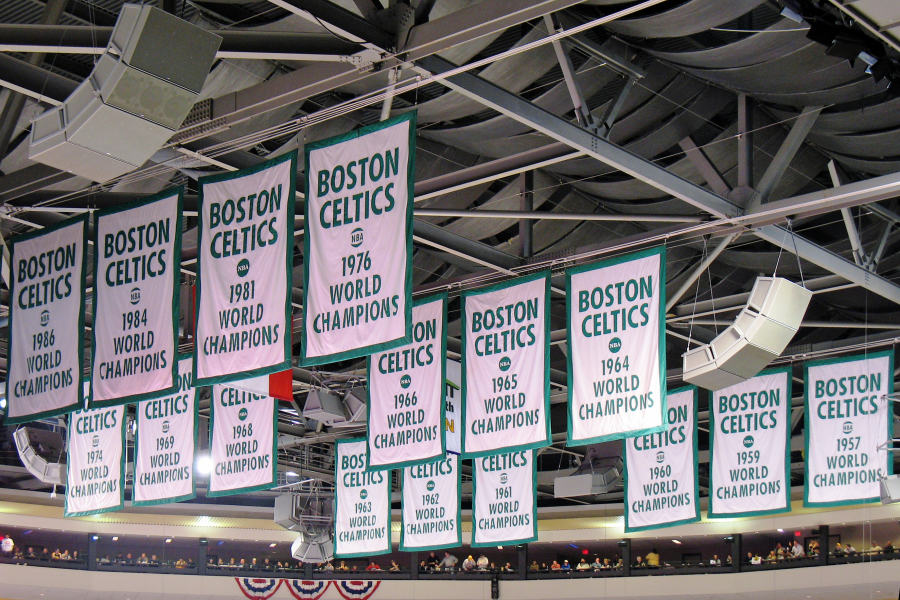It is hard to believe that at this time in 2007, the Boston Celtics were ready to unleash their monster of a trio, acquired through trade and free agency. Paul Pierce, Kevin Garnett, and Ray Allen were supposed to lead us to the promised land, and they executed in glorious fashion against the eternal rival that is the Lakers. As we stand here ten years later, it is quite an amazing feat that we are able to go for that previously felt glory yet again. However, it is a convoluted answer that arises when we ask ourselves how exactly the Celtics put themselves back in the spotlight.
There is not a singular approach to competing for the Finals spot in the NBA, yet there are certainly blueprints to take the team there. What the Celtics did was, in San Antonio Spurs fashion, conjure up draft picks and intelligent trades, while trading assets for better assets. The starkness of this model may strike some as being quite obvious, but the Celtics’ utilization of this method along with Danny Ainge’s godly foresight is the very reason we are here now.
To start the (brief) journey for the Celtics re-immersion into the Finals picture, we must turn to the then-insane trade of 2013. The Celtics traded Paul Pierce, Kevin Garnett, Jason Terry, and DJ White for Gerald Wallace, Kris Humphries, MarShon Brooks, Kris Joseph, Keith Bogans, three first-round picks (2014, 2016 and 2018), and the right to swap first-rounders in 2017. Two, maybe three Hall of Famers for a group of no names and draft picks? It was amazing there wasn’t a demand for a doping test for Ainge at the time. In the end, however, he got the final laugh. The Celtics turned out Marcus Smart, Jayson Taytum, and Jaylen Brown while the Nets fell into a state only touched by the Charlotte Bobcats. Ainge knew there was something to be said about loyalty but even more to be said for worthwhile assets. By immediately taking on garbage contracts, Ainge knew all he had to do was stick it out through the tough contracts and eventually be rewarded by the benefits of the draft picks.
That isn’t all, though, is it? If one were to ask who the two best players on the Celtics were for the last couple of years, the response would most likely be Isaiah Thomas and Jae Crowder. In conjunction to that fact, people may argue that the Celtics were simply lucky and received pearls from dumb General Managers. As much as I enjoy indulging in the fiery horror that is some of the other franchises, that argument is not the complete truth. Isaiah was once known as a score only point guard, while Jae Crowder was seen as a purely defensive asset without much of an inkling on offense. As I said before, the second part of the transformation to greatness is to trade assets for better assets. We attained Isaiah and Crowder for pennies on a dollar because they were viewed as one dimensional, while Ainge had the understanding that they were victims of situation, not their own lack of skill.
The crux of the team right now is made up of people traded for and developed by the Celtics, and not simply a running attempt at free agents. The reason the Celtics are back to greatness is simply the aforementioned blueprint and the realization that there is a process to greatness. Many lesser teams do not commit to that understanding and simply put too much emphasis at different stages, which impedes growth. Take, for instance, two teams stuck in a quagmire, the 2011 Knicks and the 76ers. The Knicks decided to skip the first step and simply cashed in all their assets without truly understanding that smacking diamonds together doesn’t create art, it creates a beautiful disgusting mess. They brought in Amare Stoudemire, Carmelo Anthony, and Chauncey Billups, immediately thinking this would bolster them into Finals contention without realizing they lacked a basis and identity as a team to begin with.
Our second example, the 76ers, are just now starting to (kind of) reap the benefits of what they sowed. Their GM at the time was a man named Sam Hinkie, who launched the infamous “The Process” campaign. There wasn’t any nuance to it, he just wanted to lose as many games as possible to gain better odds in the NBA draft lottery. This started four years ago, and now the 76ers are firmly stuck as one of the worst teams in the league, with talent that seems ready to leave as soon as possible.
How did the Celtics rise from the ashes so fast? With the same philosophy everyone should follow in life. The balance of efficiency and time is the only true way to get anything done. We are now set to compete for the top because of that simple virtue most teams in the NBA seem to turn a blind eye to.





















































